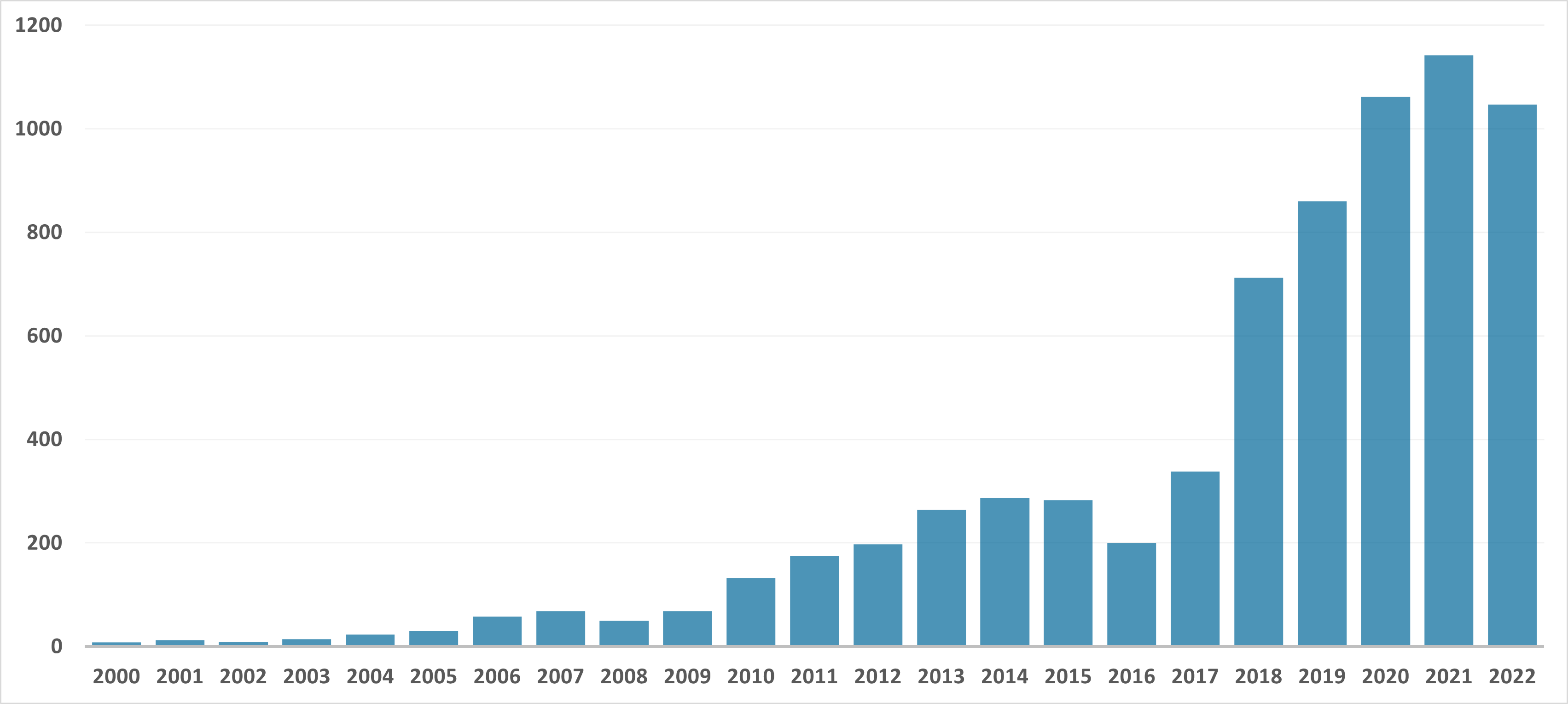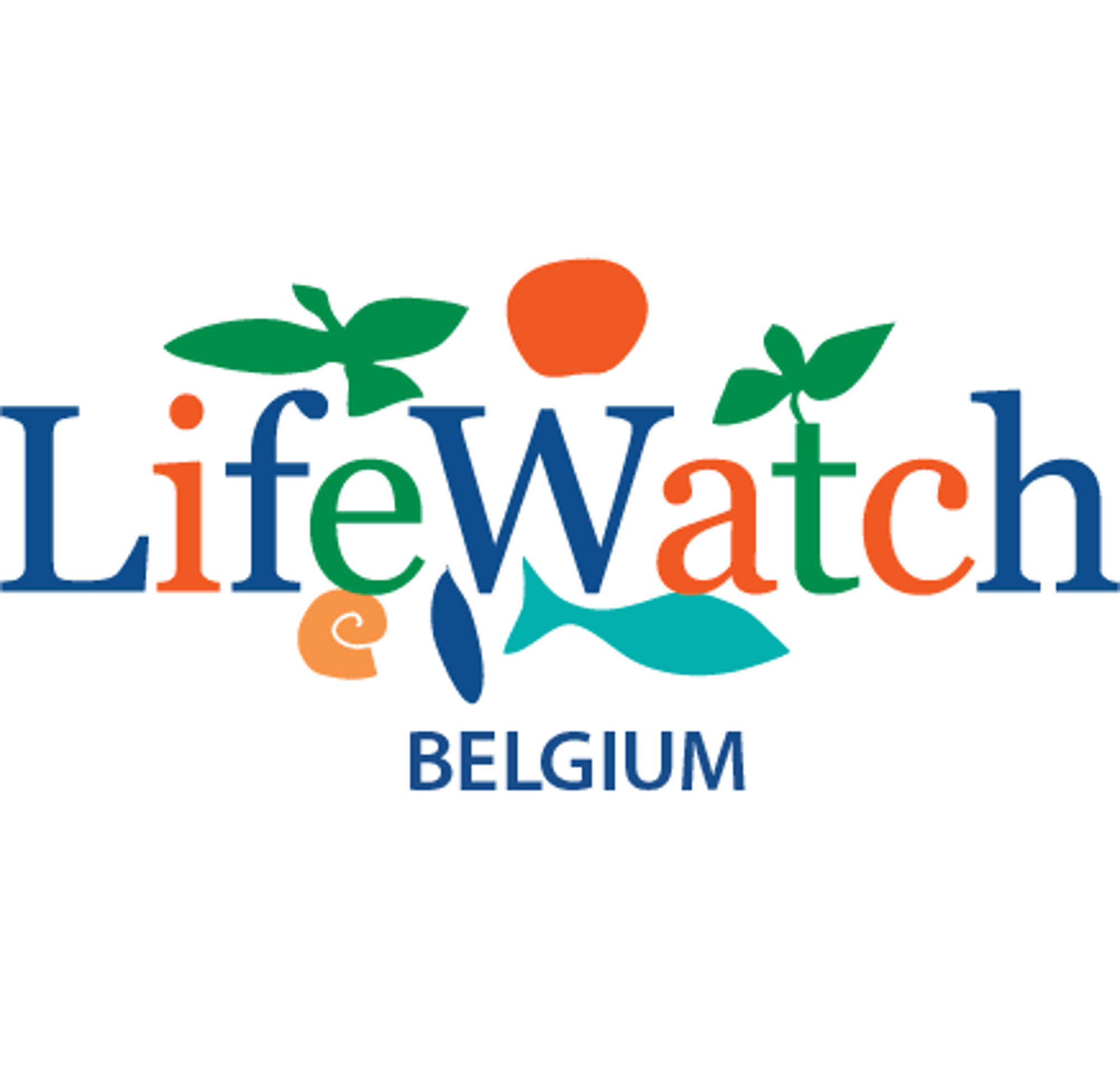Publication date: February 2nd 2023

In a previous story (Story 9) we already mentioned that all the information in WoRMS is based on published literature. As a consequence, the WoRMS literature module contains a huge amount of references, totalling to 406,681 (as of January 26th, 2023). Of all these references, roughly 38% are original descriptions.
Did you know that a lot of researchers also make reference to WoRMS or one of the related sub-registers in the abstracts, full-texts or reference sections of their publications? For many years now, the WoRMS Data Management Team has been keeping track of all published literature that refers to WoRMS. In the capable hands of the VLIZ Library team, these publications are carefully indexed, and made available through the WoRMS website. As we also include the predecessors of WoRMS, such as the European Register of Marine Species (ERMS) and the Marine Species Database for Eastern Africa (MASDEA), our reference-timeline goes back to 2000.
What can references to WoRMS tell us?
Since 2000, WoRMS (or its sub-registers) has been mentioned in 7,051 publications. A very rough calculation averages this to about 320 citations per year, over the time period 2000-2022.
Visualising these citations in a graph shows a slightly different story, with a continuous gradual increase since 2008, and a tremendous growth in the number of citations since 2017. We cannot come up with a fully objective rational explanation for this, except that 2017 marked our 10th anniversary. The combination of major outreach activities as well as WoRMS becoming more and more involved in regional, European, and international initiatives since its 10th anniversary might have led to better knowledge and usage of WoRMS. Take this in combination with the growing importance within the scientific community of ensuring the correct citation of consulted sources, even if these are an online webpage(s), and that might perhaps explain the large boost in references.

Graph shows the number of references to WoRMS and/or its subregsiter(s) (Source: https://www.marinespecies.org/wormsliterature.php)
Keeping track of these citations is a dynamic process. Notifications are mostly received through automated Google Scholar alerts as well as notifications by our editors and users. The library team in turn then pushes these references to the WoRMS website. As notifications are sometimes delayed, we suspect that the number of citations for 2022 is not yet complete.
Which treasures might lurk in all the references connected to WoRMS?
For the more than 7,000 publications referring to WoRMS, there has not yet been any time to explore these in more detail. But it does lead to some questions within the Data Management Team that are, as with type localities, largely led by curiosity. An in-depth analysis of these publications might help us identify why, how and by whom WoRMS is being used. From these results, we could possibly improve our communication and content-target strategies. Several questions could be formulated: are our publishing users mainly taxonomists, ecologists, policy makers or data managers? And if WoRMS is being consulted in the preparation of a manuscript, is this limited to a single species or rather a taxonomic group check? Or to retrieve statistics on the total number of species? Many more questions could be thought of, and the Data Management Team is very much open to suggestions on this.
For the references in the WoRMS literature module, the answer to this question is quite straightforward: many of them contain species descriptions, new combinations, and ecological information on taxa. As each reference is added to a piece of information in WoRMS as a specific ‘source type’, this allows a rather simple first overview of the content of the available references. It might also form the first search entry for people wanting to know more about a certain taxonomy-related topic within a specific taxon group, as the advanced literature search interface of WoRMS offers ample possibilities.
As with type localities (Story 10), a targeted approach, in this case of making PDFs available, might be a good way to tackle this gap. Although this is not defined as a priority gap for the Steering Committee, editors and users do point out the importance and relevance of this. At least one taxon group is making major progress on this front: Copepoda. Of all 78,697 references linked to Copepoda, an impressive 52% has their PDFs available!
The WoRMS PDF request service - another literature story
Built into the WoRMS website, is the possibility for users to either directly download Open-Access PDFs or request access to Non-Open-Access PDFs for those references where a PDF is available. Of the more than 406,000 references in WoRMS, 25% have their PDF available. A download request only gets approved when a valid reason for the download is provided (see also Story 6). The daily number of requests varies from 1 to more than 100, with an average of 15 requests per day since 2018. Reasons for these download requests vary widely, e.g. for research, for a taxonomic revision, for a reviewer revision, for identification of collected specimens, and even for homework! Requests arrive in various languages, testing the knowledge of the Data Management Team and sometimes even that of well-known online translating services. As with the literature references to WoRMS, these requests can prove a valuable resource to get to know our users better, although currently the DMT lacks time to look into this in more detail.
Contact
WoRMS Data Management Team - info@marinespecies.org
Image credit
- Online library: Image by macrovector_official on Freepik (thumbnail on overview page WoRMS Stories)
Acknowledgements:
This celebration and series of news messages initiated by the Data Management Team (DMT) would not have been possible without the collaboration of the WoRMS Steering Committee (SC) & voluntary contributions by many of the WoRMS editors.
The work of the DMT and many WoRMS-DMT-related activities are supported by LifeWatch Belgium, part of the E-Science European LifeWatch Infrastructure for Biodiversity and Ecosystem Research. LifeWatch is a distributed virtual laboratory, which is used for different aspects of biodiversity research. The Species Information Backbone of LifeWatch aims at bringing together taxonomic and species-related data and at filling the gaps in our knowledge. In addition, it gives support to taxonomic experts by providing them logistic and financial support for the organization of meetings and workshops related to expanding the content and enhancing the quality of taxonomic databases.
WoRMS – as ABC WoRMS – is an endorsed action under the UN Ocean Decade.
Note: as is the case for previous stories and their highlighted examples, many more examples are available within WoRMS. The highlighted examples are either well-known to the Data Management Team through close interactions with the related editor-groups or through discussions within the Steering Committee. It is by no means the intention of the DMT to favour any group or species over another. The names of all species are equally important to be documented within WoRMS.



